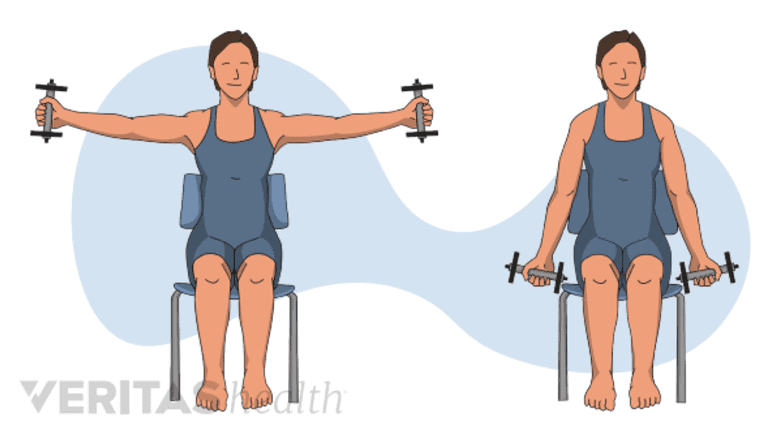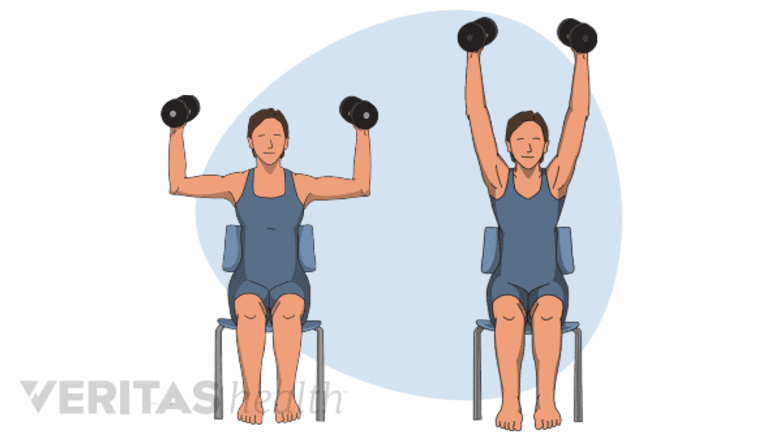Strengthening and conditioning the shoulder muscles increases the muscles’ ability to stabilize the ball-and-socket construction of the main shoulder joint, the glenohumeral joint. Joint stability minimizes the effects and progression of arthritis in the shoulder.
In This Article:
- Shoulder Exercises for Arthritis
- Shoulder Stretches
- Shoulder Strengthening Exercises
- Aerobic Exercise for Shoulder Arthritis
Lateral Raises

- Sit in a straight back chair with a 3-lb weight in each hand and arms hanging down at each side.
- Rotate arms so that thumbs face outward, away from the body (this position will help ensure tendons do not become irritated).
- In a slow, controlled manner, gently exhale and raise arms out to the sides. Thumbs should be facing up; elbows should be only slightly bent.
- When arms are raised parallel to the ground, pause, and then inhale while slowly bringing arms down.
A reasonable goal is three sets of 12. Adjust the amount of weight to add or lessen the level of difficulty. Lateral raises may also be done while standing, with knees only slightly bent (3-5 degrees) and back straight.
Shoulder Press

- Sit in a straight-back chair holding a 3 lb. weight in each hand and arms hanging down at each side.
- Raise upper arms out and parallel to the ground, with elbows bent at 90 degree angles and hand weights up - as if striking a pose to show off bicep muscles.
- Holding the weights, palms and fingers should face inward toward the body. This is the starting position.
- From this position, gently exhale while slowly raising the arms and straightening elbows, bringing the weights together overhead.
- Pause briefly, and then inhale while returning back to the starting position.
- A straight (not arched) back and contracted abdomen should be maintained throughout this exercise.
A reasonable goal is three sets of 12. Adjust the amount of weight to add or lessen the level of difficulty.
Shoulder presses may also be done while standing, with knees only slightly bent (3-5 degrees). Whether standing or sitting, always maintain back straight and contracted abdomen.

